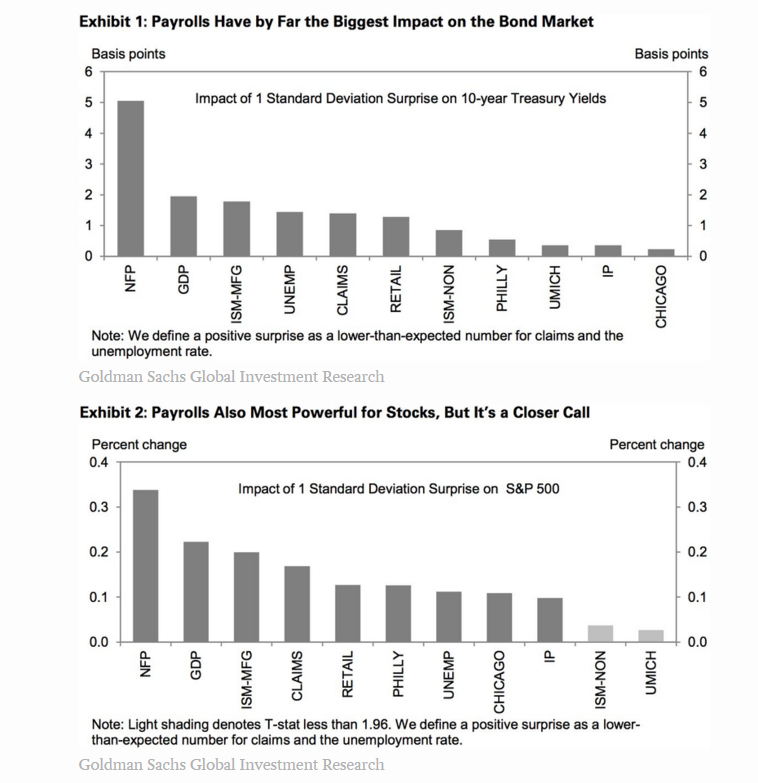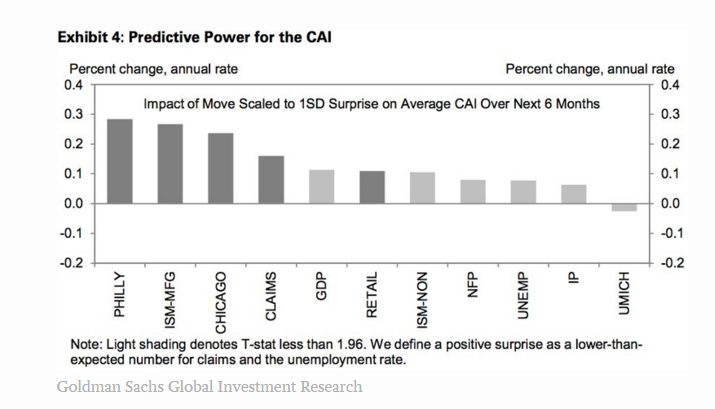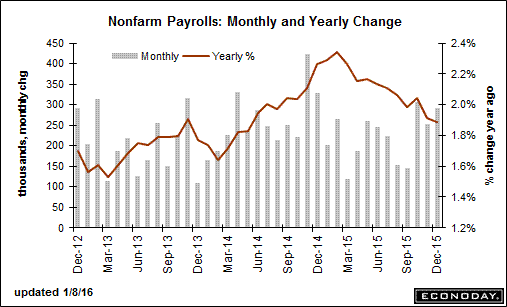Exalted status
Of course the payrolls data has always had an “exalted status” in the minds of traders and the media, as the most important economic release of the month. There is a strong argument however to say that this reputation is not really justified.True the number can and does move the markets both in the USA and elsewhere round the globe. But how many times have you heard the old adage that the first move is usually the wrong one. As far as Non Farms are concerned this is often the case.
More than one number
This may be because it’s not just one number. Yes we get the headline number of new jobs created, but we also get the unemployment rate, the labour participation rate, average hourly earnings and hours worked. Perhaps most importantly of all we get the revisions, if any, to prior data releases. So there is plenty of data to read and digest, before deciding whether it equates to good or bad news and indeed whether good news is actually good news.What we mean here is that high levels of job creation and falling unemployment should on the face of it be a positive catalyst. However in a market that has been reliant on cheap money & lower interest rates for nearly a decade, the prospect of higher interest rates may not be appealing at all and therefore good numbers could, in those circumstances, actually cause a sell off. Conversely a weak number may well be interpreted as a positive catalyst, as it could imply that rates will stay lower for longer.
Empirical data
So much for the psychology of the markets what does the empirical data tell us about the importance of Non-Farm payrolls in the macroeconomic premier league? For answers we can turn to research conducted in 2013 by Jan Hatzius, Chief Economist at Investment Bank Goldman Sachs, which looked at this very question.As we can see from the charts below the Non-Farm Payrolls have by far the biggest immediate impact, among major data releases, on both the US Bond and Equity markets, though in the latter case its not quite so clear cut.
Charts show the impact of a one standard deviation surprise in data items on US Bonds & Equities.

However when Mr Hatzius measured the longer-term impact of Non- Farm Payrolls, on one of Goldman’s economic models, the Current Activity Indicator or CAI, a very different picture emerged.
Chart shows the impact of a one standard deviation surprise in data items on the GS CAI model.

As we can see from the chart above the impact of surprises in Non-Farm Payrolls data on the Goldman model, over a six month period was limited. Whilst surprises in releases such as the Philly Fed, ISM Manufacturing and Chicago PMI ,which are data rich reports ,had a much more significant impact over the longer term.
In the words of Mr Hatzius:
"Our most important finding is that the impact of both nonfarm payrolls and advance GDP is small and statistically insignificant," says Hatzius. "In contrast, the Philly Fed index, the Chicago PMI, and initial jobless claims contain a statistically significant and economically meaningful amount of information for growth.”
Style over substance?
In summary then Non-Farm Payroll surprises can and do move the market, however when viewed in isolation they may not mean that much. Furthermore they have limited effect on predictions of growth & economic well-being. Data rich releases, such as those mentioned above, have a limited impact on the market in the short term but are much more influential in determining the path of future expectations about the US economy.Regular readers will be aware that I have flagged the importance of these data rich items over the last 6 to 12 months and I have recently highlighted the downward trend in the ISM manufacturing data as a worrying sign. I have also championed the Atlanta Fed GDPNow model, which though still an experiment, is proving to be an increasingly accurate gauge of late stage GDP reads and which relies on the input of more than 20 monthly data points of which Non-Farm payrolls data is just one. I think you can see which side of the Non-Farms debate I come down on.
What can we expect on Friday?
Following Decembers 292k figure analysts are forecasting a read of 188k with a range of forecasts sitting between 170k and 215k for NFPs. Unemployment is forecast to remain unchanged at 5%, whilst Average Hourly Earnings (AHE) should see a +0.3% gain. But the consensus is for no change in hours worked.Chart shows both the monthly and annualised change in Non-Farm Payrolls since Dec 2012

As we can see the annual rate of job creation (red line) has been falling since March 2015. That’s to be expected, if you believe, as we do. that the US economic revival is nearer to the top of the cycle than the bottom.
What would concern the market greatly however is if that rate of change started to accelerate i.e. the downward curve steepened appreciably? That would call December’s rate rise into question once again and provide a further headache for Janet Yellen and her fellow Federal Reserve Governors.
Trading with currencies and CFDs is speculative in nature and could involve the risk of loss. Such trading is not suitable for all investors. Before using the services of Admiral Markets AS please acknowledge the risks associated with trading, terms and conditions of the services and consult and expert if necessary.
Recommended Content
Editors’ Picks
EUR/USD hovers near 1.0700 ahead of US data

EUR/USD struggles to build on Wednesday's gains and fluctuates in a tight channel near 1.0700 on Thursday. The US Dollar holds its ground following the Fed-inspired decline as market focus shifts to mid-tier US data releases.
GBP/USD holds steady above 1.2500 following Wednesday's rebound

GBP/USD stays in a consolidation phase slightly above 1.2500 on Thursday after closing in the green on Wednesday. A mixed market mood caps the GBP/USD upside ahead of Unit Labor Costs and Jobless Claims data from the US.
Gold retreats to $2,300 despite falling US yields

Gold stays under bearish pressure and trades deep in negative territory at around $2,300 on Thursday. The benchmark 10-year US Treasury bond edges lower following the Fed's policy decisions but XAU/USD struggles to find a foothold.
Top 3 Price Prediction BTC, ETH, XRP: Altcoins to pump once BTC bottoms out, slow grind up for now

Bitcoin reclaiming above $59,200 would hint that BTC has already bottomed out, setting the tone for a run north. Ethereum holding above $2,900 keeps a bullish reversal pattern viable despite falling momentum. Ripple coils up for a move north as XRP bulls defend $0.5000.
Happy Apple day

Apple is due to report Q1 results today after the bell. Expectations are soft given that Apple’s Chinese business got a major hit in Q1 as competitors increased their market share against the giant Apple.